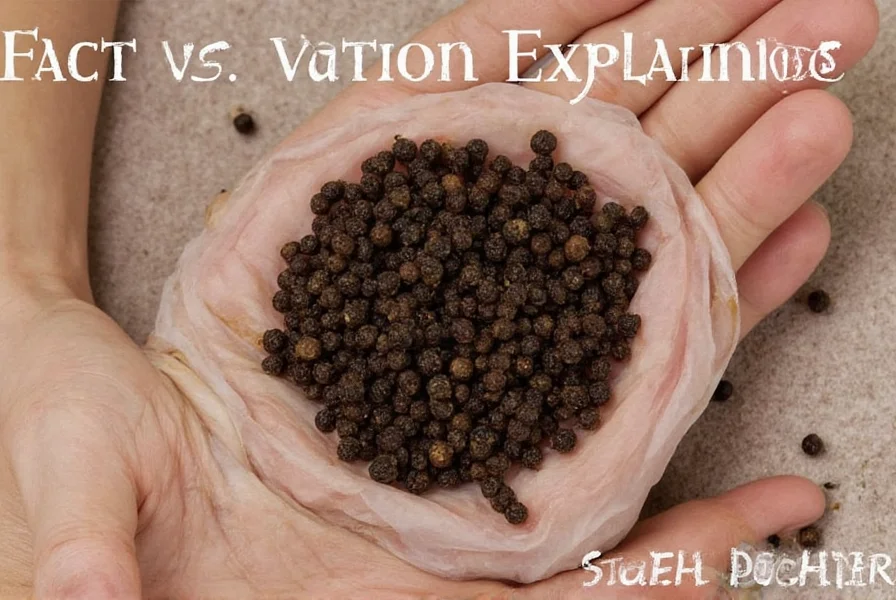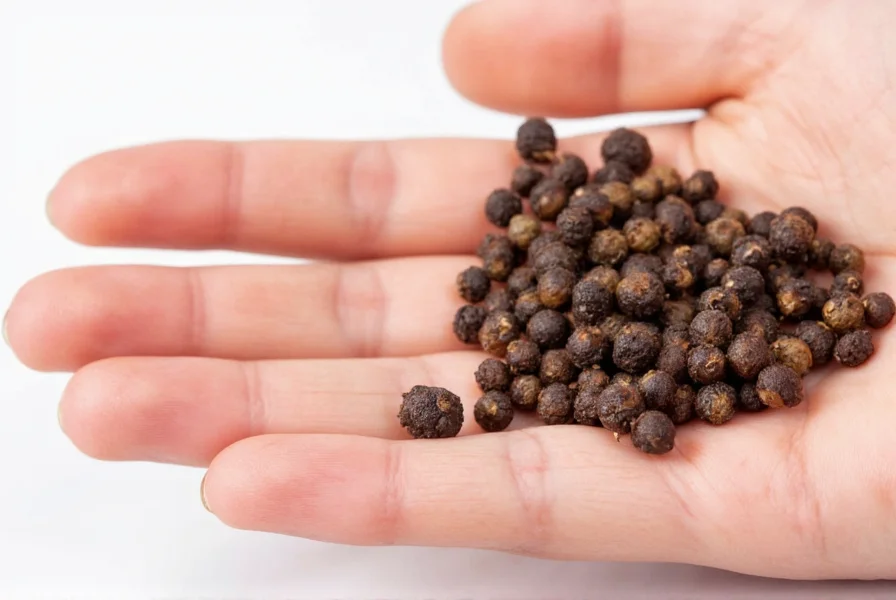Many home cooks have encountered tiny moving specks in their black pepper and panicked about "black pepper mites." This widespread concern stems from viral social media posts showing what appears to be living organisms in pepper grinds. However, entomologists and food safety experts confirm that true mite infestations in properly processed black pepper are extremely rare.
Understanding the Black Pepper Mite Myth
When people report seeing "black pepper mites," they're typically observing one of three things:
- Pepper particles - Black pepper's coarse texture can create small, moving fragments when poured
- Dust mites - Common household mites that might be present in kitchen environments but don't specifically target pepper
- Spider mites or other pantry pests - Occasional contaminants in improperly stored spices
True mite species don't specialize in black pepper consumption. The confusion often arises because certain mites like Acarus siro (the grain mite) can infest various stored products, but they prefer higher-moisture environments than properly dried black pepper provides.
How to Identify Actual Mite Infestations in Spices
If you suspect genuine mite activity in your spices, look for these specific signs:
| Actual Mite Signs | Normal Pepper Characteristics |
|---|---|
| Webbing or clustering behavior | Individual granules that don't move collectively |
| Musty odor from the container | Characteristic pungent pepper aroma |
| Visible movement under magnification | Static particles that only move when poured |
| Infestation in multiple stored products | Issue isolated to one container |
Properly processed black pepper contains only 8-12% moisture, creating an environment too dry for most mites to survive. The University of California's Integrated Pest Management Program confirms that mites require at least 14% moisture content to thrive.
Preventing Pantry Pests in Spices
While true black pepper mites aren't a specific concern, proper storage prevents any potential pantry pest issues:
- Store black pepper in airtight glass or metal containers
- Maintain kitchen humidity below 60% using dehumidifiers if necessary
- Keep spices away from heat sources which can increase moisture absorption
- Buy whole peppercorns instead of pre-ground pepper for longer shelf life
- Freeze newly purchased spices for 48 hours to eliminate potential pests

The National Center for Home Food Preservation recommends storing dried spices at temperatures below 70°F (21°C) for maximum shelf stability. When stored properly, whole black peppercorns maintain quality for 2-3 years, while ground pepper lasts 1-2 years.
Safety Considerations for Contaminated Spices
If you genuinely discover mites in your spices:
- Discard the affected container immediately
- Wash surrounding shelves with hot, soapy water
- Inspect other stored products for potential spread
- Consider using bay leaves as natural deterrents in spice storage areas
Consuming mite-contaminated spices rarely causes health issues for most people, though sensitive individuals might experience mild digestive discomfort. The FDA considers incidental mite presence in spices an unavoidable defect when below certain thresholds.
Debunking Common Misconceptions
Viral videos often misidentify normal pepper characteristics as "mites." What appears to be movement is usually:
- Static electricity causing pepper particles to jump
- Moisture absorption making pepper granules expand and shift
- Optical illusions from viewing coarse pepper under magnification
Food scientists at major spice companies confirm that commercial black pepper undergoes rigorous processing that eliminates living organisms. The grinding process alone creates temperatures exceeding 120°F (49°C), which kills most potential contaminants.

When to Consult a Professional
While isolated incidents don't require professional intervention, contact a pest control specialist if you notice:
- Recurring infestations across multiple food products
- Visible webbing in storage areas
- Musty odors emanating from multiple containers
- Actual sightings of live mites outside containers
Most pantry pest issues can be resolved with improved storage practices rather than chemical treatments. The Entomological Society of America recommends integrated pest management approaches focusing on prevention rather than eradication.
Are the tiny moving specks in black pepper actually mites?
No, these are almost always pepper particles moving due to static electricity or moisture absorption. True mite infestations in properly stored black pepper are extremely rare due to its low moisture content.
Is black pepper with mites safe to eat?
If genuine mites are present, it's best to discard the affected pepper. While consuming mite-contaminated spices rarely causes serious health issues, it may cause mild digestive discomfort in sensitive individuals.
How can I prevent pantry pests in my spices?
Store spices in airtight glass or metal containers, maintain kitchen humidity below 60%, keep spices away from heat sources, and consider freezing newly purchased spices for 48 hours before storage.
Do mites actually live in black pepper?
True mite species don't specifically target black pepper. Most mites require higher moisture environments than properly dried black pepper (8-12% moisture) can provide. What appears to be mites are usually harmless pepper particles.
What's the best way to store black pepper long-term?
Store whole peppercorns in airtight containers away from light and heat. Properly stored, they maintain quality for 2-3 years. Ground pepper has a shorter shelf life of 1-2 years due to increased surface area and faster moisture absorption.











 浙公网安备
33010002000092号
浙公网安备
33010002000092号 浙B2-20120091-4
浙B2-20120091-4